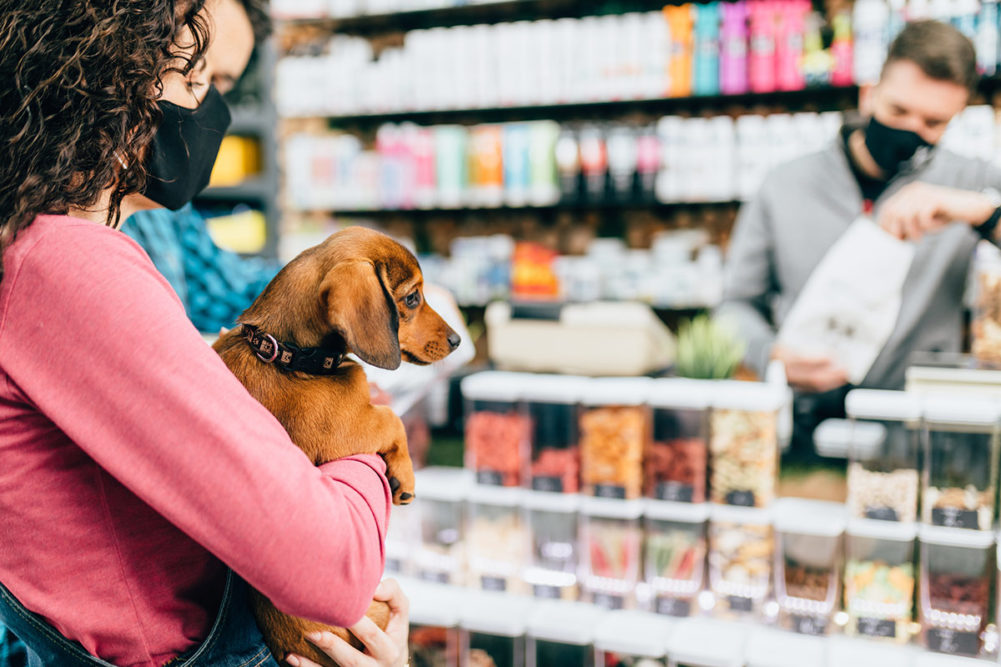NEW YORK — Morgan Stanley on March 3 projected the pet care industry will reach $275 billion in 2030, reflecting an 8% topline compounded annual growth rate (CAGR) driven by tailwinds from pandemic-era purchasing and pet ownership trends.
The financial institution’s Economics, Housing and AlphaWise research teams compiled several data points to come to this conclusion. The firm expects pet care sales to accelerate after 10 years of CAGR growth coming in around 3%.
Pet spending continued relatively undeterred by the COVID-19 pandemic. Morgan Stanley shared that in an October 2020 study, it found a majority (72%) of pet owners in the United States had no plans to alter their pet spending regardless of their financial situation.
Roughly 10% of pet owners who participated in the American Pet Product Association’s COVID-19 Pulse Studies indicated they purchased a new pet during the pandemic, which equates to approximately 11 million pets. Morgan Stanley estimates the cost to care for a pet per year is at least $1,000, leading the firm to believe annual pet care spending will increase incrementally by $11 billion or more.
Annual pet spending per household could reach $1,292 by 2025 and $1,909 by 2040 based on pet spending and pet ownership trends, according to the firm. This would result in a total industry spending increase of 134% over the next 10 years. Specifically, Morgan Stanley expects pet product spending to increase 115% from $70 billion in 2019 to $151 billion in 2030.
Additionally, the financial institution stated that pet spending is becoming “less discretionary and more necessary” among US consumers. Between 2014 and 2019, income inelasticity for pet care purchases declined from historical inelasticity rates, indicating pet owners are increasingly unwilling to cut pet spending even if their level of disposable income decreases.
Morgan Stanley also predicted the animal health category will outpace the food and treat category over the next 10 years, as more and more owners seek to improve their companions’ qualities of life not only through nutrition, but through veterinary care and health care products as well.
The Millennial generation is expected to drive much of this growth in the industry, as the cohort reports the fastest household formation tends to spend more on their pets than other age groups, and the majority (65% of Millennials) plan to acquire or add a pet to their household in the next five years, the firm reported. Comparatively, roughly 43% of all other generations plan to acquire a new pet in the next five years. Overall, Morgan Stanley expects pet ownership to increase by 14% by 2030.
E-commerce is another driving factor for pet care growth. Morgan Stanley pointed out that 23% of pet food and supplies were purchased online in 2019, representing a shift of roughly $5 billion from other channels. This trend is expected to continue for pet food, treats and other pet industry segments, including pet prescriptions.
Morgan Stanley also discussed stock implications of these trends for publicly traded companies including Chewy, Tractor Supply Company, Nestlé Purina, Colgate-Palmolive (Hill’s Pet Nutrition), General Mills (Blue Buffalo), The J.M. Smucker Company, Elanco and Zoetis. Due to share losses, Morgan Stanley predicted The J.M. Smucker Company will see fewer benefits from pet industry growth compared to its peer companies.
According to Morgan Stanley, roughly 50% of Tractor Supply Company’s revenue comes from livestock and pet sales, Nestlé Purina remains a leading player in the pet food category behind Mars Petcare, Hill’s Pet Nutrition is “well-positioned” to benefit from pet spending and ownership tailwinds, and General Mills is poised to gain share of market sales through Blue Buffalo.
Keep up with the latest pet food and treat trends on our Trends page.




